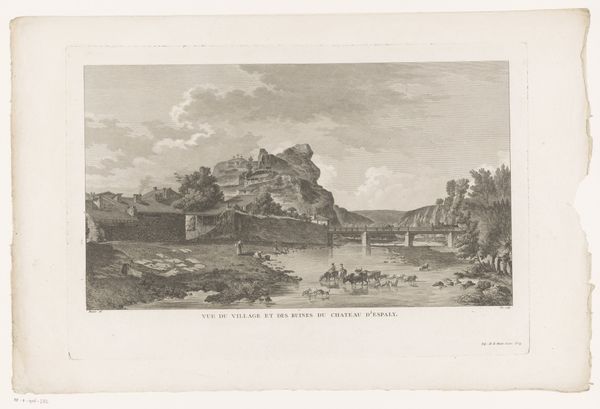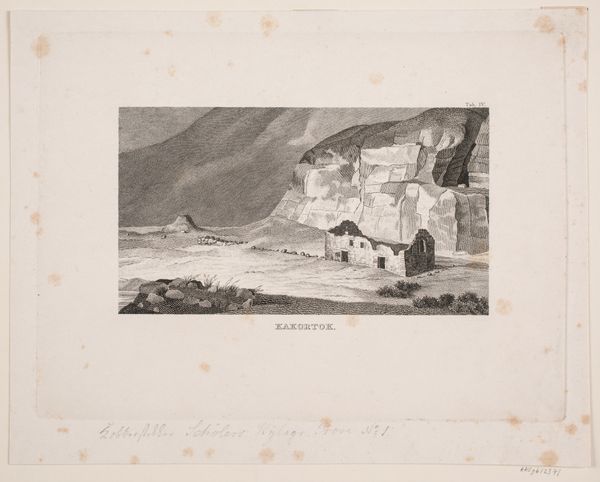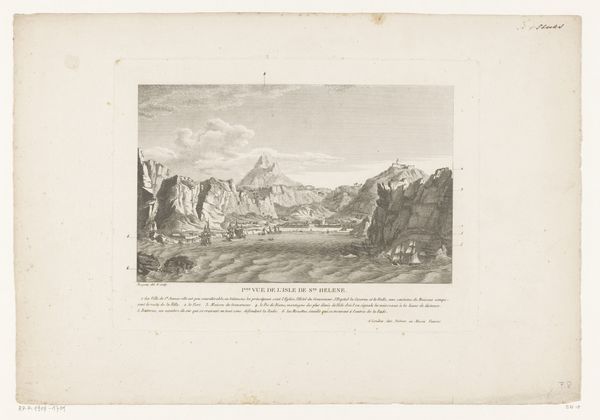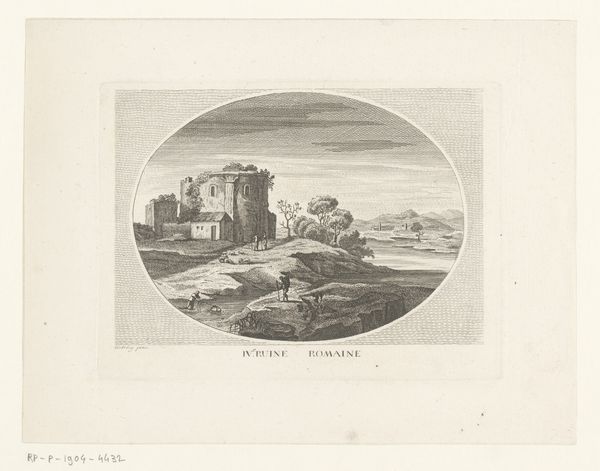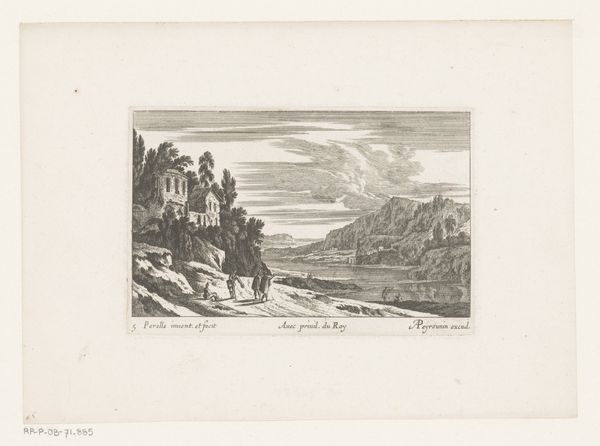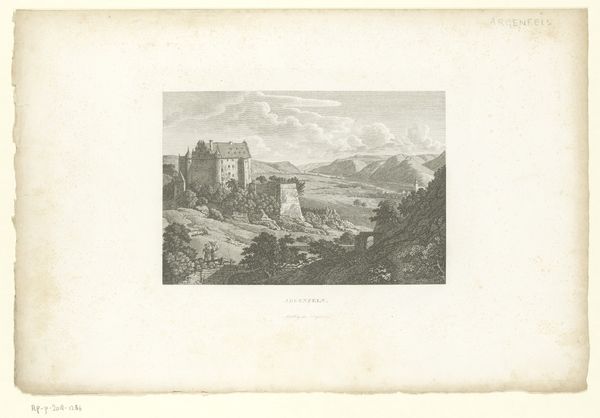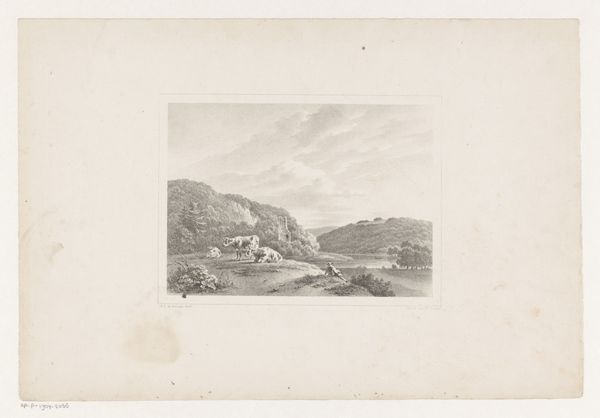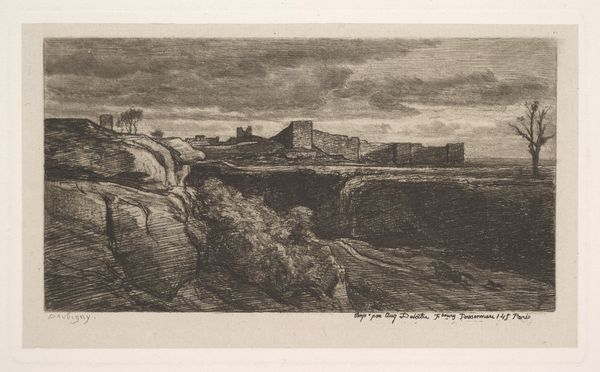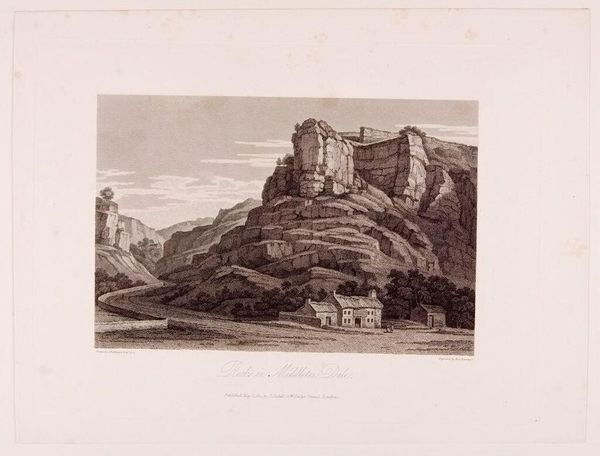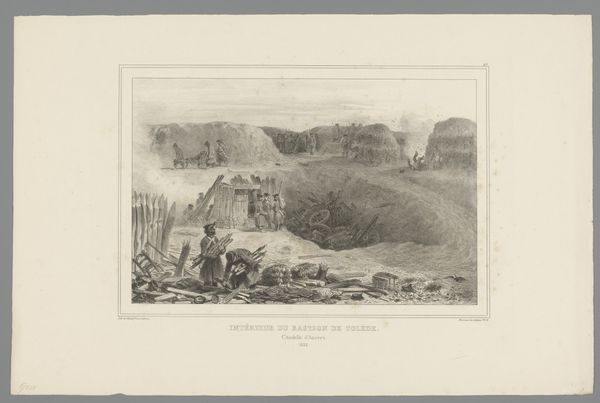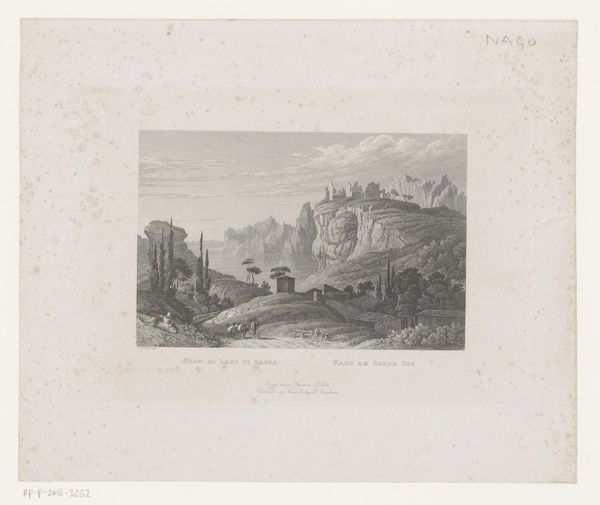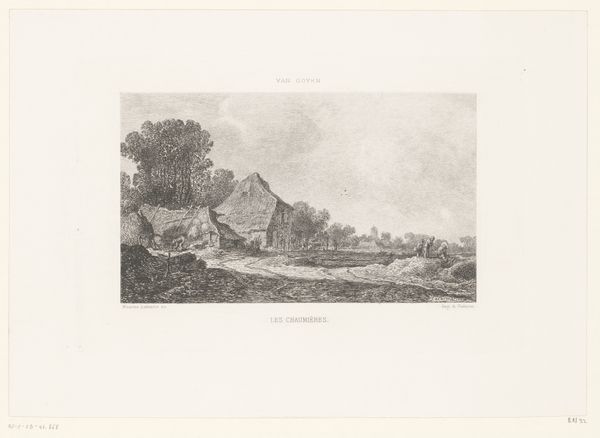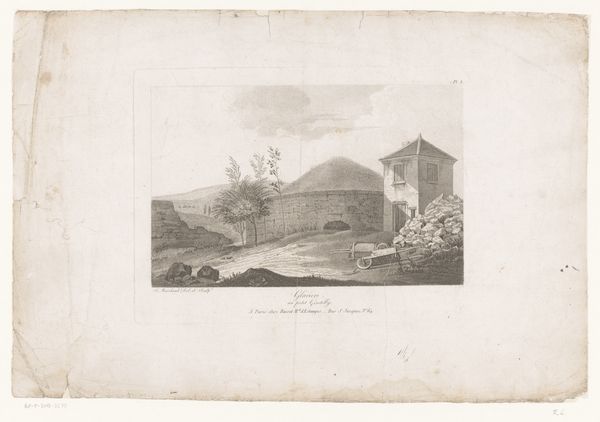
print, engraving
#
neoclacissism
# print
#
landscape
#
ancient-mediterranean
#
cityscape
#
engraving
Dimensions: height 155 mm, width 235 mm
Copyright: Rijks Museum: Open Domain
Editor: So, here we have Jean Baptiste Ambroise Marcellin Jobard's "View of Pompeii," created sometime between 1809 and 1857. It’s a print, an engraving to be exact, currently residing in the Rijksmuseum. It depicts the outskirts of the city. It's quite stark... what do you see in this piece beyond just a historical landscape? Curator: I see a pointed commentary on time, loss, and power, and its complex relationship to place. This engraving comes from a period of intense fascination with the classical world, but it also coincides with a time of immense social and political upheaval. Consider how the ruins of Pompeii became a symbol of lost empires and the fragility of human achievement but it was a city destroyed by a volcano, a natural disaster, and the ultimate loss of control of our human domain. Editor: That's a compelling perspective! It is interesting to think about it coinciding with such a tumultuous time in European history. The turn to antiquity, like here in Neoclassicism, seems almost an escapist response, but your suggestion complicates this. Can you elaborate more about social and political context, perhaps the political relevance? Curator: Of course. It’s a reflection on power structures of that era. Pompeii, in its rediscovery, was interpreted by some as a civilization crushed, maybe as a warning of political hubris. Who controls history? Who gets to tell the story? In our context of decolonization, we are still grappling with how archaeological findings get used and abused, manipulated by people to justify their political claims. Editor: So, beyond the aesthetic and historical interest, there's a deeper engagement with themes of control and power? It’s more than just pretty ruins; it's a statement. Curator: Exactly. It encourages us to confront our understanding of progress. Editor: I'll definitely look at this print differently now, thinking about the era of its creation and its message concerning resilience, power and who gets to tell history. Thank you for pointing me to see all these different layers and their impact.
Comments
No comments
Be the first to comment and join the conversation on the ultimate creative platform.
